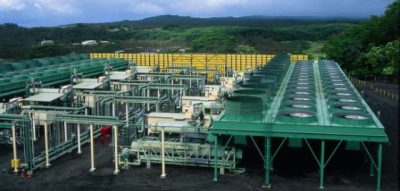 California’s gigantic aqueduct that snakes through the entire state to irrigate farms is probably the world’s best site for developing solar on bodies of water.
California’s gigantic aqueduct that snakes through the entire state to irrigate farms is probably the world’s best site for developing solar on bodies of water.
According to Todd Woody at the New York Times, who asks, Could the California Aqueduct serve as a solar farm? Israel’s Solaris Synergy estimates that its floating solar system could generate two megawatts in every mile along the 400 mile length of the California Aqueduct – which would mean a staggering 800 MW solar power station if the entire length was used. Their system is already in use on the utility scale in Israel.
In land-starved Israel, Solaris Synergy looks to reservoirs, rivers, and even the ocean for hosting its solar power stations. It was named one of Israel’s top two early stage environmental technologies at this year’s Clean Tech Open IDEAS Competition.
The company estimates that the vast majority of the sun’s energy that hits the earth only falls on water surfaces. Solaris Synergy hopes to utilize that for maximum solar production at minimum cost, by siting installations on bodies of water, including industrial use water, because there is much more potential space there.
Last year it signed a contract with Mekorot, Israel’s national water company, to install the F-CPV system on one of its reclaimed water reservoirs. The pilot project involves installation of a 50KW power plant in the second quarter of 2011, with the option of expanding to 3 MW. Mekorot, which owns the majority of Israel’s more than 400 reservoirs, will initially test the system’s ability to deal with environmental factors such as wind, waves and live organisms.
Using the waterway to support the Solaris Synergy system of CPV solar generation would kill two birds with one stone.
It would help maximize the efficiency of the panels. CPV (Concentrated PhotoVoltaic) use mirrors to focus and concentrate the sun’s power. But CPV solar goes through a lot of thermal stress that wears down semiconductor material systems, accelerating breakdowns. Water can be used in CPV to cool the system, maximizing efficiency.
There is also California’s need to power the aqueduct pumps that move the huge body of water, while simultaneously reducing its greenhouse gases. One pumping station alone features more than a dozen 80,000-horsepower motors. Currently 20% of the state’s energy use goes to moving water through the state. Offsetting some of that (typically natural gas-powered) electricity with clean solar would help reduce the state’s greenhouse gases.
Image: Ecofriend
Related stories:
Float Solar on Water Says Israel’s Solaris Synergy
Leviathan and Solaris Synergy Imagine if the Water for the Shower Can Make the Energy Needed to Turn on the Light



